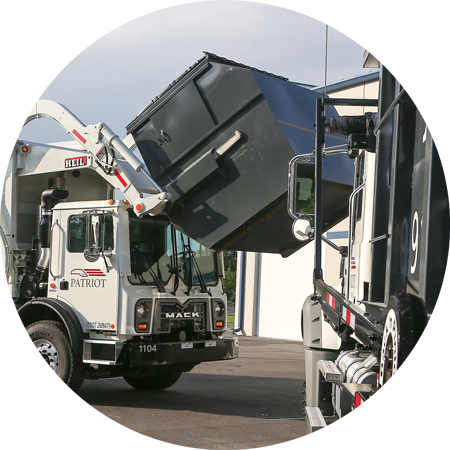Is your facility getting ready to start a waste reduction program? Do you want to improve an already establish waste management system? For all businesses, a waste assessment is a valuable tool to understand your waste stream. The waste assessment should provide a clear picture of what and how much is being thrown away and a baseline for your reduction efforts. The information gathered in the assessment is the basis for planning your waste reduction programs and improving waste management practices in your business.
Evaluating your Waste Management System
Step 1: Look into Infrastructure
First, you need to establish your current waste infrastructure. Find a map of the facility and mark where all bins, dumpsters, compactors and other waste management containers are located. While looking at the map, start to identify better locations to place containers. Walkways, vending areas, loading docks, food courts and anywhere else trash is generated make great locations for containers.
Step 2: Collection
Collection is an important part of your waste management system. You need to know who already is managing the collection of trash and recycling. Look into your contracts and make sure you’re taking advantage of everything you’re paying for.
When your waste management company comes to collect the waste, are their trucks, forklifts and other necessary tools able to operate or is it difficult for them to reach the containers? Are alleys large enough for collection trucks to pass, back up and turn where the dumpsters are placed? Your waste management company might have issues effectively collecting your waste.
Step 3: Evaluate Efficiency
Check for previous waste management assessments to see if the efficiency has ever been evaluated. Also see what other baselines have been measured. Review how technology and recent advancements can help with the efficiency of your waste management system.
Step 4: Know the Final Destination
After the waste leaves your facility, you should still understand where it will be going. Some can be taken to a recycling facility, but make sure the recycling load is not contaminated by non-recyclables. Others can be taken to a compost facility (if available in your area), transfer stations and, in some unique cases, food donation programs.
Check into the final destination and ensure they ethically manage the materials. You don’t want to send your waste somewhere that has a negative environmental impact. Also ask if they follow health and safety requirements for facility employees.
Step 5: Set Goals
To have a better waste management system, you need to set goals. To set better goals, ask yourself the following:
- Do you have any refuse management goals?
- Does your business have any environmental policies that support your businesses goals?
- What is your timeline for completing your goals?
If you are planning to implement or expand your waste management system, a waste assessment will help you establish important baselines at your business and help to identify opportunities for waste reduction or recycling. Your goal behind the assessment should be to provide a starting point for setting improvement goals.
PRIDE. COMMITMENT. EXCELLENCE.
Most people don’t think too much about the trash we throw away… But some of us think about it a lot. At Patriot Sanitation Management, we’ve made it our business to figure out how to manage waste better. To learn more about our services, contact us today: (919) 773-8008 for your free commercial waste removal estimate.



